NYC’s Forgotten ‘War on Christmas Trees’
Discover how an obscure holiday crackdown affects festive street vendors today!



Prospect Park. Photo by gigi_nyc from the Untapped Cities Google Glass Scavenger Hunt
Hiking in New York City? Yep, you can do that. It’s not always necessary to drive out into the middle of nowhere to find the solitude of a forest or trail – you can find it right here in New York City and in any of the five boroughs. Most of the trails go back to the Native Americans era and were formed thousands of years ago by natural processes, maintained now by the NYC Parks Department. All you need to do is gather up your gear and hop on train or bus to get there!
So before winter arrives, check out these peaceful nature trails, which are perfect for explorative walks, jogs or bike rides.

Van Cortlandt Park, accessible by the 1 and 4 trains as well as several Bronx line buses, was once occupied by the Wickquasgeck Indians and is New York City’s fourth largest park. A popular site for cross country races, this park is home to several ideal nature trails. All of these trails are between 1 to 1.6 miles long, with the exception of the cross country ones.
For a hike on the challenging side, try the moderate-difficult Cass Gallagher Nature Trail near the horse stables. For a more moderate experience, try the John Muir Trail, which is the only trail to cross the park from east to west and will allow you to see the park’s diverse kinds of trees and the Croton Aqueduct. An easy-moderate hike can be found along the Old Croton Aqueduct Trail, which is a segment of the 41-mile-long aqueduct that transported water from the Croton Dam to New York City in the 1800s.
The easier John Kieran Trail, near the golf course, meanders through the park’s lake and freshwater wetlands area, passes Tibbett’s Brook over a wooden bridge ideal for birdwatching, and loops with the Parade Ground. There’s also the easy-level Putnam Trail, which is part of a larger trail that runs up to Brewster, Putnam County and contains native hardwood hickories and used to be a railroad route that was in the park in the 1980s.
If you see (or smell) signs of horses along the way, don’t be surprised; Van Cortlandt Park also has Bridle Path, which also used to be part of a railroad route, for horseback riding.
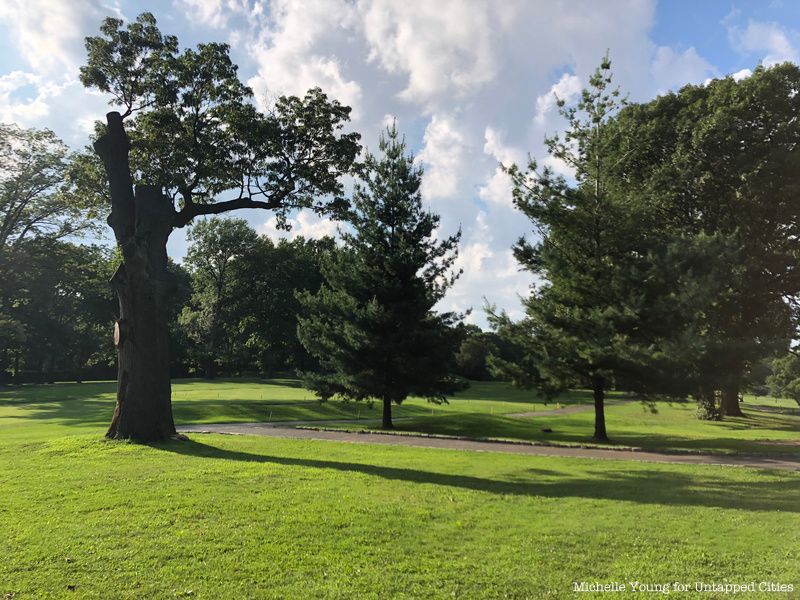
Formed by a Wisconsin glacier 20,000 years ago and the former site of railroad lines, Forest Park is both a gem for nature lovers and very accessible via different buses running in Queens. This park has a “knob and kettle” terrain, meaning there are stretches of small hills. There are also bridle paths.
Its trail names are easy to remember; there’s the the 1.7-mile Blue Trail, which winds through an old-hickory forest and kettle ponds, the 1 mile Yellow Trail, and the 2.4-mile Orange Trail, which winds along the park’s perimeter.

Prospect Park. Photo by gigi_nyc from the Untapped Cities Google Glass Scavenger Hunt
Though it was constructed by the same designers behind Central Park, Prospect Park is much more known for its wetlands and raw nature than Central Park is, making it great for hiking. With at least four main trails, all of which are one mile or less and “easy” level, Prospect Park is a nature-loving New Yorker’s paradise.
The Lullwater Trail will show you an abundance of birds and wildlife, the Midwood Trail is home to Prospect Park’s largest trees and loops through the Audubon Center and the Peninsula Trail allows for exquisite views, fishing, and even more wildlife. Most notably, the Waterfall Trail will show you the source of the Lake, and you’ll also see six waterfalls along the watercourse.

In Westchester County lies an 18-mile, fragmented stretch (soon to be 23 miles) of greenery called the Bronx River Greenway running along the Bronx River Parkway. It is the only trail in New York City along a freshwater river. Though certain areas of the park offer more solitude and isolation than others, it is nonetheless an ideal area to get away from the busyness of New York City.
Some of the most significant sections of this park are Muskrat Cove, a segment of woodland named for a population of muskrats living within its banks, Shoelace Park, and the Bronx River Forest, which contains some of the last remaining old growth forest in New York City. There’s also Soundview Park – if you walk down a certain dirt path you’ll reach the tip of a jetty that provides scenic views of the junction of the Bronx and East Rivers.

Home to one of the most important bird sanctuaries in the northeastern United States and the only wildlife refuge in the national park system, the Jamaica Bay Wildlife Refuge is a great place for birdwatchers as well as nature lovers. It contains several natural habitats like salt marshes, upland fields, an extensive bay, and fresh and brackish water ponds, which allow all kinds of reptiles, amphibians, mammals, horseshoe crabs and even 60 species of butterflies to inhabit it. Like the Bronx River, it’s also a great place for kayaking.
Because of its importance, you need walking permits (which are free) to hike the trails. You can take the A train or Q53 and Q21 buses to get to this wildlife gem.
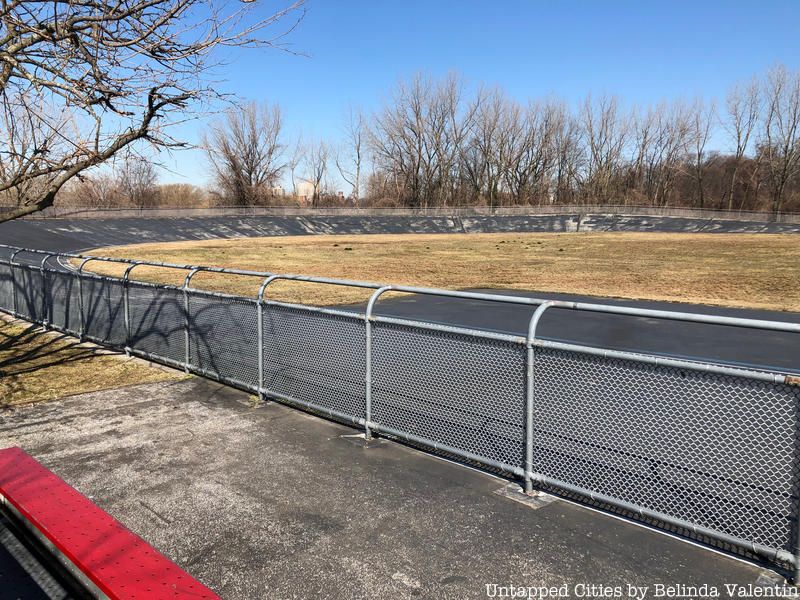
Though its trails are less extensive than many on this list, Kissena Park is still a great place to find solitude if you find yourself or live near Flushing, Queens. While many go here for its Velodrome, baseball fields, barbeque areas and playgrounds, there are also narrow, quiet trails filled with shade from dozens of tree species. These trails are ideal for a run, walk or bike ride on soft, flat terrain.
Be prepared for an occasional bunny or mouse along the way, as well as the wonderful scents of nature. Also stop by the lake to fish or see turtles resting on rocks, geese, and even cormorants. Located in the quieter part of Flushing, you can get here by taking the 7 train and/or a few different Queens buses.
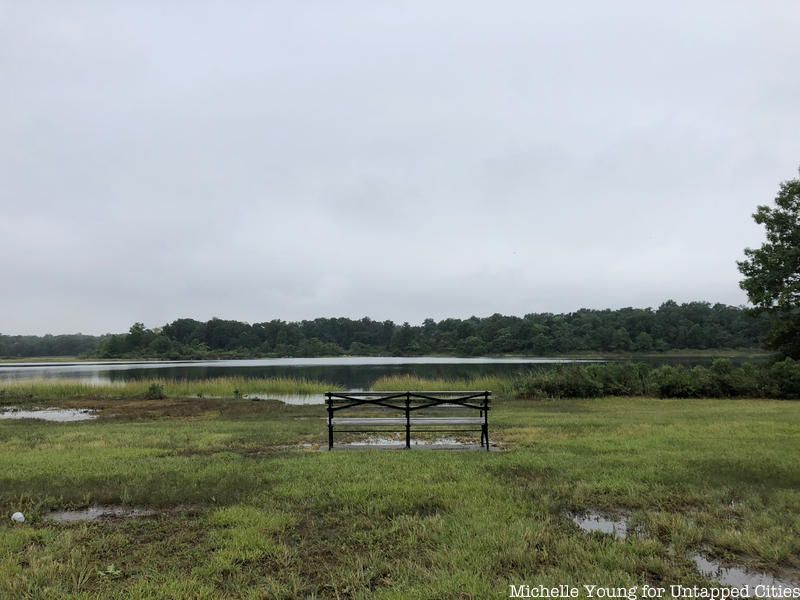
If 13 miles of shoreline, marshes, meadows, and forests, accompanied by the sights of red-tailed hawks and Japanese honeysuckle sounds appealing, then the Kazimiroff Nature Trail in Pelham Bay Park is the right place for you. Luckily, it’s just a quick ride to the last stop of the 6 train.
The trail winds through 189 acres of Hunter Island and gives you two options: the Red Trail or Blue Trail (which is the longer of the two). It goes through the heart of its forest, its exterior wetland region, and the shore of Orchard Beach.
Along the way are side trails that lead to the “Gray Mare” (a large glacial boulder that the Siwanoy Indians used to perform ceremonies on), a glacial erratic and the shore of Twin Island. You can read a guide to the trails here.
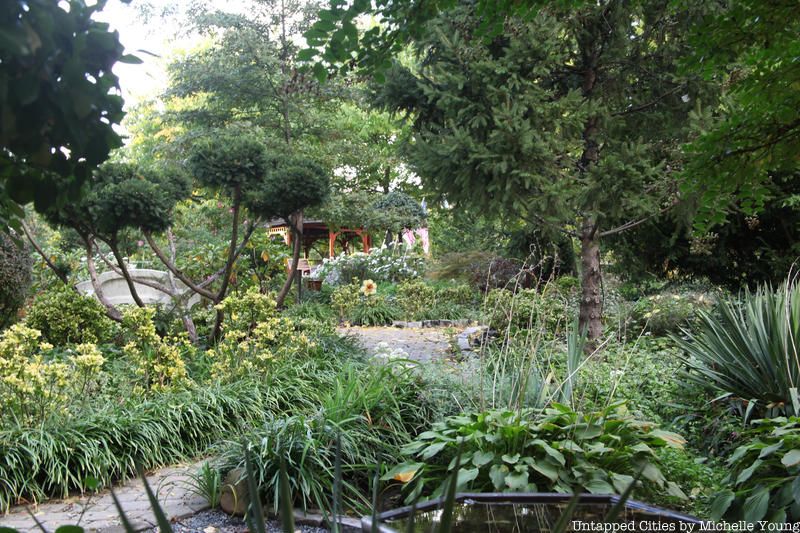
What immediately sets this park apart is its prehistoric roots, as evident through its caves, valleys and ridges from moving glaciers from over 30,000 years ago. The Lenape tribes used these caves as seasonal camps when they lived here, before Henry Hudson’s 1609 arrival. Inwood Hill Park also has the last salt marsh and forest in Manhattan and is one of New York City’s best places to see a bald eagle.
In addition to a biking trail along the Hudson River, there’s the two-mile Inwood Hill Park Hiking Trail in the northwest section, which is “moderately” difficult to traverse and is filled with tulip trees, maples and oaks. If you keep going, it’ll lead you to the top of a hill, where the park’s oldest trees are. So if you’re in a more adventurous mood and want to explore, be sure to hop on an A or 1 train and check this park out.
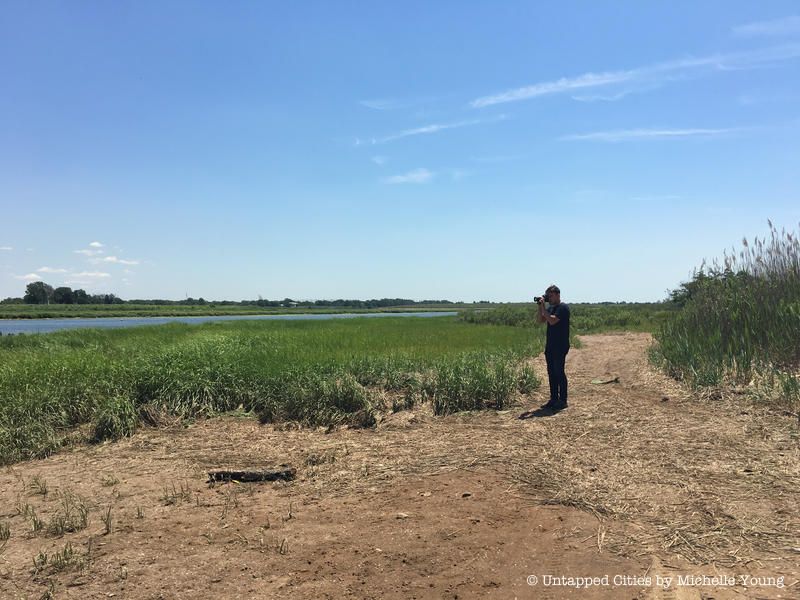
Gerritsen Creek is a freshwater creek on the westernmost inlet of Jamaica Bay and stretches half as far inland as it used to. However, it is still home to bird species like warblers, loons, and pheasants, as well as plant species like ragweed, mulberry trees, and goldenrod.
The entrance to this specific, mile-long trail is at East 33rd and Avenue U. It then runs along the shore of Gerritsen Beach and ends at Jamaica Bay. The trail’s second section winds through tall prairie grass, and you can also kayak nearby. Luckily, the creek is very accessible – there are several trains and buses you can take here.
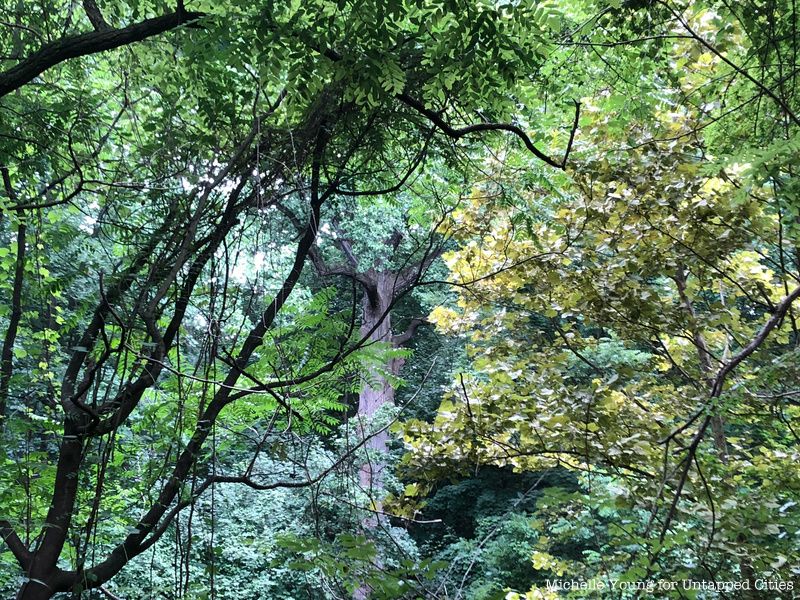
Its renowned dedication to preserving the environment and wildlife, Alley Pond Park is thus one of the best places to explore nature. Due to its glacier-formed moraine, the park has several wetlands, tidal flats, meadows and forests. Though its trails are shorter than those on this list, there’s a great abundance of them.
The Blue, Green, Orange, White and Yellow Trails as well as the Ralph Sloman trail all start on Winchester Boulevard and wind through kettle ponds and a hardwood forest and provide stunning marsh views. The Tulip Tree Trail starts on Cloverdale Boulevard. All of these trails are actually less than a mile long, so you might want to map out which combinations to try before coming. This park is easily accessible by taking the E or F train to Union Turnpike and then the Q46. The adventurous can go in search of the oldest tree in New York City, located in Alley Pond Park.
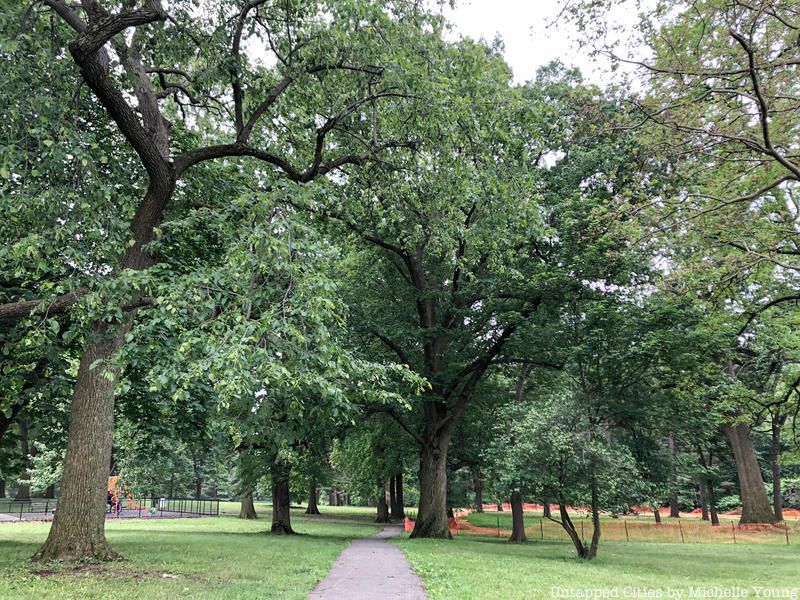
The two features that set Clove Lakes Park apart from other outdoor areas are its ash green, serpentine rocks and three-hundred year old tulip tree, which is the largest living thing in Staten Island. The three-mile Clove Lakes Park Trail along Victory Boulevard will provide you with valley lakes, pathways through wooded hills, scenic bridges and the famous tulip tree itself. It is also home to species like snapping turtles, belted kingfishers, and red-backed salamanders. Catch a Staten Island ferry to see all of this interesting wildlife.
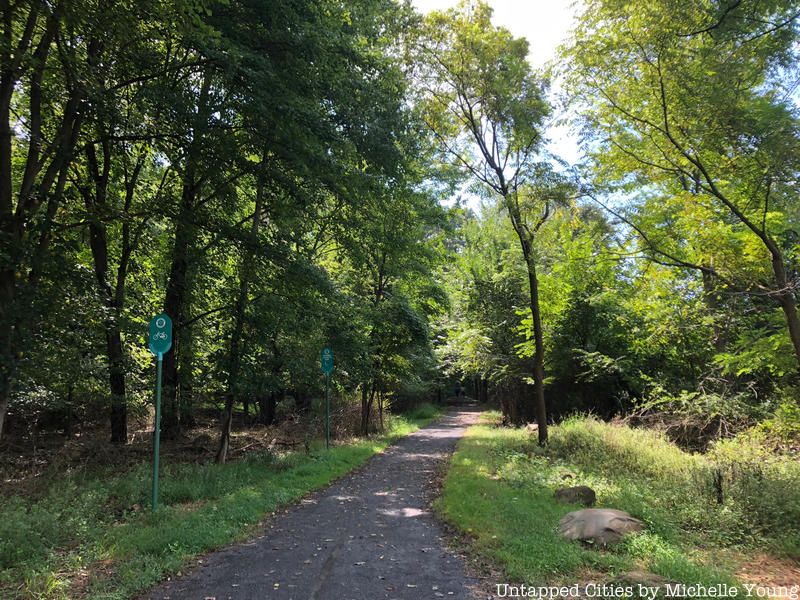
This massive area at Staten Island’s center offers 35 miles of trails, making it the most extensive on this list. There are six main trails accommodating all difficulty levels. The easy-moderate blue trail is 12.3 miles long and runs from Staten Island Boulevard to Todt Hill, which is one of the highest spots on the Eastern Seaboard. The white trail has the same difficulty level and is 7.6 miles, while the red trail and difficult level yellow trail are 4 and 8 miles, respectively.
At High Rock Park along the Greenbelt, you can climb the 260-foot, man-made Moses Mountain and enjoy its panoramic views. At Willowbrook Park, you can fish in the first man-made lake in Staten Island and explore smaller trails.
The dry areas of the Greenbelt contain oak, tulip, beech and hickory trees, while areas with moister trails have maples, oaks and willows. There are also persimmon and sweet gum trees along the trail. Thus, for a very long day of uninterrupted running, biking or walking in nature, hop on the ferry and bus and head over to the Greenbelt Trails.
Next, read about the Top 5 Places to Find the Outdoors in the Bronx, the Borough with the Most Parks in NYC, check out the Oldest and Tallest Tree In NYC and see a Boat Tour to Freshkills Park on Staten Island.
Get in touch with the author @sgeier97
Subscribe to our newsletter